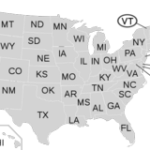“What should I wear today?”
That is a question that has been asked for decades by public school children everywhere. But in some schools, the answer is always the same. Schools nationwide are debating whether or not their schools will join the thousands who have chosen to have their students wear school uniforms.
This movement is taking hold in many states. Ten years ago, only 3 percent of all public schools required that students wear uniforms. By 2004, that number had risen to 14% according to the National Association of Elementary School Principals. Some school officials support the policy, hoping that uniforms will encourage students to focus of their work. Critics, however, state that the students should be able to express themselves via their clothing.
‘Expressing themselves’ has taken a sharp turn in the past ten years however. The introduction of gangs, baggy pants, revealing clothing and more relaxed attitudes in some homes have led to the advent of mandatory uniforms.
A study that was published in The Journal of Education Research, found that the uniforms did nothing to improve the student’s attendance or discipline and did not decrease drug use within the schools. The study also found that it affected the students in a negative way.
But many supporters believe that the students will behave how they are dressed. If they are dressed in a tailored manner, then the students will act accordingly. Since students at some schools were upset by the fact that they had to wear uniforms while the teachers wore what they liked, schools made it mandatory that both teachers and students dress in uniforms. The change created not only a change of dress but also a change in attitude.
The problems with attitude towards the dress code seem to be with the upper grades rather than the elementary age students, who seem to like the uniforms. Adolescents seem to feel as if their freedom of choice has been stripped. Several comments have been made that this age group feels like they are in jail. Even one 8th grader that I spoke to informed me that it was “like the book 1984′.
Uniforms make schools better places in which to learn, supporters say. They argue that dress codes often improve discipline and lessen bullying and teasing.
While the cost issue for parents who struggle financially comes into question as well. Some school’s uniforms are about $200 per student, which can quickly add up when a family has three to five children. While that are other schools who insist on higher-priced brand names while in Sydney, Australia, parents are dishing out as much as $1500 for a school uniform. However, much of the cost isn’t the uniform itself, its dry cleaning.
Others will argue that you are violating a person’s right to freedom of expression. Parents also state that public schools are running scared of gangs and violence. They question if uniforms prevent a gang member from going home after school, wearing his gang clothing, and going down the street to meet his buddies and look for action.
But in a time when kids will be beaten or even killed for a designer pair of sneakers, one must ask the question, “When does it end?” If school uniforms are stepping over the line of freedom and control then what is the answer? Even the ACLU in past years has risen up on the side of the protestors.
In Long Beach, California’s schools, where the large school district required uniforms and produced favorable results, it is still a hotly debated subject. Some studies will say that this does nothing for the students while others will contest that fact.
So, is paying $200 a school year in uniforms worth the price versus the price of buying jeans and T-shirts that now fall under tighter dress codes? Even if the students don’t do better academically in school, there is going to be a point when those kids will grow up into adults who have to wear a type of uniform in work force. We normally don’t get choices in business clothes that we must wear. Aren’t we really just preparing the children for a future of conceding to decisions already made for them or have we truly gotten tired of Orwell’s vision of the future becoming a reality?
Your choice. Or is it?




